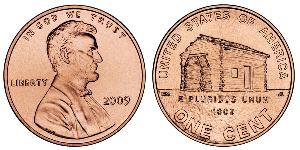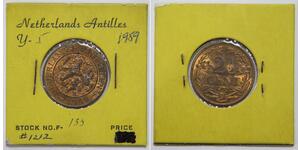Variations of 1 cent copper coins of USA
One cent copper coins, commonly referred to as "pennies," have been minted in various designs and compositions throughout the history of the United States. Here are some notable variations:
Large Cents (1793-1857): The United States Mint initially produced large cents, which were about the size of a modern half dollar. These coins featured various designs, including the Chain Cent, Wreath Cent, Liberty Cap Cent, Draped Bust Cent, and Classic Head Cent. They were made of pure copper or a copper alloy.
Flying Eagle Cent (1856-1858): The Flying Eagle Cent was the first small-sized cent produced by the United States Mint. It featured a flying eagle on the obverse and a wreath on the reverse. It was composed of 88% copper and 12% nickel.
Indian Head Cent (1859-1909): The Indian Head Cent featured a Native American chief on the obverse and a wreath with a shield on the reverse. It was composed of 95% copper and 5% tin and zinc.
Lincoln Wheat Cent (1909-1958): The Lincoln Wheat Cent, designed by Victor David Brenner, featured a portrait of Abraham Lincoln on the obverse and two wheat stalks on the reverse. It was composed of 95% copper and 5% tin and zinc.
Lincoln Memorial Cent (1959-2008): The Lincoln Memorial Cent featured a depiction of the Lincoln Memorial on the reverse, designed by Frank Gasparro. It retained the same composition as the Wheat Cent.
Lincoln Bicentennial Cents (2009): In 2009, the United States Mint issued four different designs on the reverse of the Lincoln Cent to commemorate the bicentennial of Abraham Lincoln's birth. The designs represented various aspects of Lincoln's life.
Shield Cent (2010-present): The current design of the Lincoln Cent features a shield on the reverse, symbolizing Lincoln's preservation of the Union. It has the same composition as previous Lincoln Cents.
Copper-Plated Zinc Cents (1982-present): In 1982, the composition of the Lincoln Cent was changed to copper-plated zinc due to the rising cost of copper. These coins have a zinc core with a thin layer of copper plating.
You may be interested in following coins
2025-05-24
- New coin is added to 1 Liard Belgium Copper
1 Liard Belgium Copper
group has 4 coins / 4 prices
⇑
Austrian Netherlands - Liard 1790 - Head
2025-06-16
- New coin is added to 2 1/2 Cent Netherlands
2 1/2 Cent Netherlands
group has 18 coins / 14 prices
⇑
NETHERLANDS ANTILLES 2 1/2 CENTS CROWNED DUTCH LION W/ SWORD WORLD COIN









